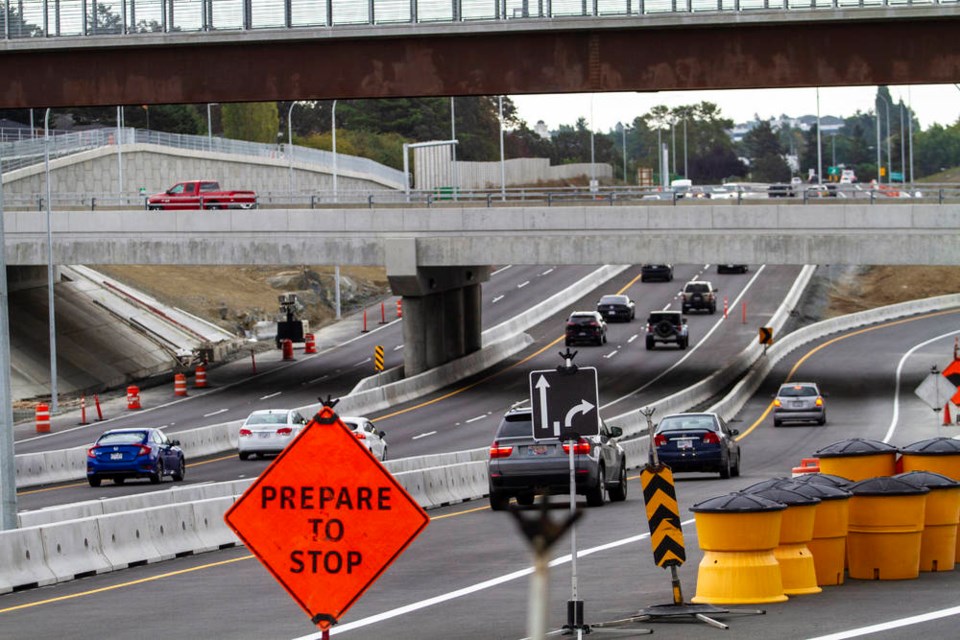A commuter ferry between Royal Bay and downtown Victoria should be a priority for all levels of government to ease transportation choke points in the capital region, says the Colwood mayor.
Rob Martin was responding to the South Island Transportation Strategy, which shows the ferry as a “long-term” goals to move people more efficiently.
“I was hoping [a Royal Bay ferry] would be more of a medium-term strategy, because I do think it’s very important for the whole region,” Martin said in an interview Saturday. “I know I need to take more of an advocate role on how important this is to us and the success of our overall transportation strategy.”
The South Island Transportation Strategy, released Friday by the province, aims to reduce dependency on vehicles and support clean-air initiatives.
The Transportation Ministry said work on highway infrastructure will continue while activity around the strategy gets started at the community level. Roads, bridges and interchanges will be designed and built with pedestrians, cyclists and wheelchair users in mind.
Other major points include more charging stations for electric vehicles and adding bike lockers and park-and-ride stalls.
But the strategy makes little mention of options such as a marine commuter system to the West Shore or the future of the E&N rail corridor.
“That should have been in there,” said Bruce Williams, chief executive of the Greater Victoria Chamber of Commerce.
“There’s some indication about what they intend to do but they don’t say how and when they intend to do it.”
Williams said the focus seems to be on the West Shore, which is fair given that’s where the growth in the region is, and he applauded the focus on Indigenous communities.
A 2019 report on a commuter ferry said such a service could remove up to 1,000 vehicles a day from local highways and move more than a million people a year between the West Shore and downtown Victoria. It envisioned five catamaran fast ferries travelling between Royal Bay and Ship Point, each with room for 294 passengers, paying $2.50 per 28-minute ride.
The cost was at more than $100 million, said Martin, with $25 million for a breakwater and dock at Royal Bay, up to $4 million for dock improvements in the Inner Harbour and the remainder for vessels.
The report estimated that the service, if implemented by 2021, would carry 3,077 passengers daily and generate annual revenues of $2.59 million. By 2038, the daily ridership could reach 4,019, for annual revenue of $3.39 million.
B.C. Ferries, which commissioned the report, has said it is only in the “very preliminary” stages of determining the feasibility and its involvement.
But Martin said it’s time to start taking a serious look. He points to the explosive growth on the West Shore, including the massive development of Royal Bay with thousands of new homes, new schools and several businesses.
“The ferry plans should come sooner rather than later when we’re still in a position where the [waterfront] land is still raw and undeveloped,” Martin said.
A ferry system could be expanded as needed, he said. “With roads, you can only build them out so much.”
Langford Mayor Stew Young, an advocate of preserving the E&N Rail line as a transportation corridor, said investing in fighting the pandemic should be the main priority of the provincial government right now.
“We can plan for the E&N corridor, but I wouldn’t fault the government for not throwing a billion dollars at transportation projects right now,” Young said Saturday. “I think the priority is COVID-19.”
Young still believes the corridor is key in alleviating traffic problems and is open to electric commuter trains, or even buses that run on rails.
He said the completion of the McKenzie interchange and the reduced traffic flows due to the pandemic have lightened traffic from the West Shore “and bought the province a little time” to implement any major transportation initiatives.
Chris Foord, an independent transportation consultant, agreed that the pandemic has reduced traffic volumes on the South Island. His main concern for the region is the Malahat, the only real access to the rest of the Island.
Foord would have liked to have seen a plan for speed cameras on the highway and believes they would reduce accidents significantly. He said a survey about 18 months ago revealed about 75 per cent of respondents wanted them and believed they would make the Malahat safer.
The roadway is notorious for high speeds and snarled traffic as accidents can close the route for hours.
Foord believes an alternate route to the west should eventually be built and then connect the Nanaimo Parkway and Inland Island Highway.
He said the province transferred land in the Goldstream watershed to the west of the highway “for recreational services” several years ago and this should be used for a new route away from the Goldstream River. “It’s not in the Sooke Lake Watershed, the source of our water,” Foord noted.
“I know this isn’t going to happen any time soon, but we have to start looking at it,” he said. “At the very least, let’s start with speed cameras.”
— With files from Jeff Bell and Andrew A. Duffy



